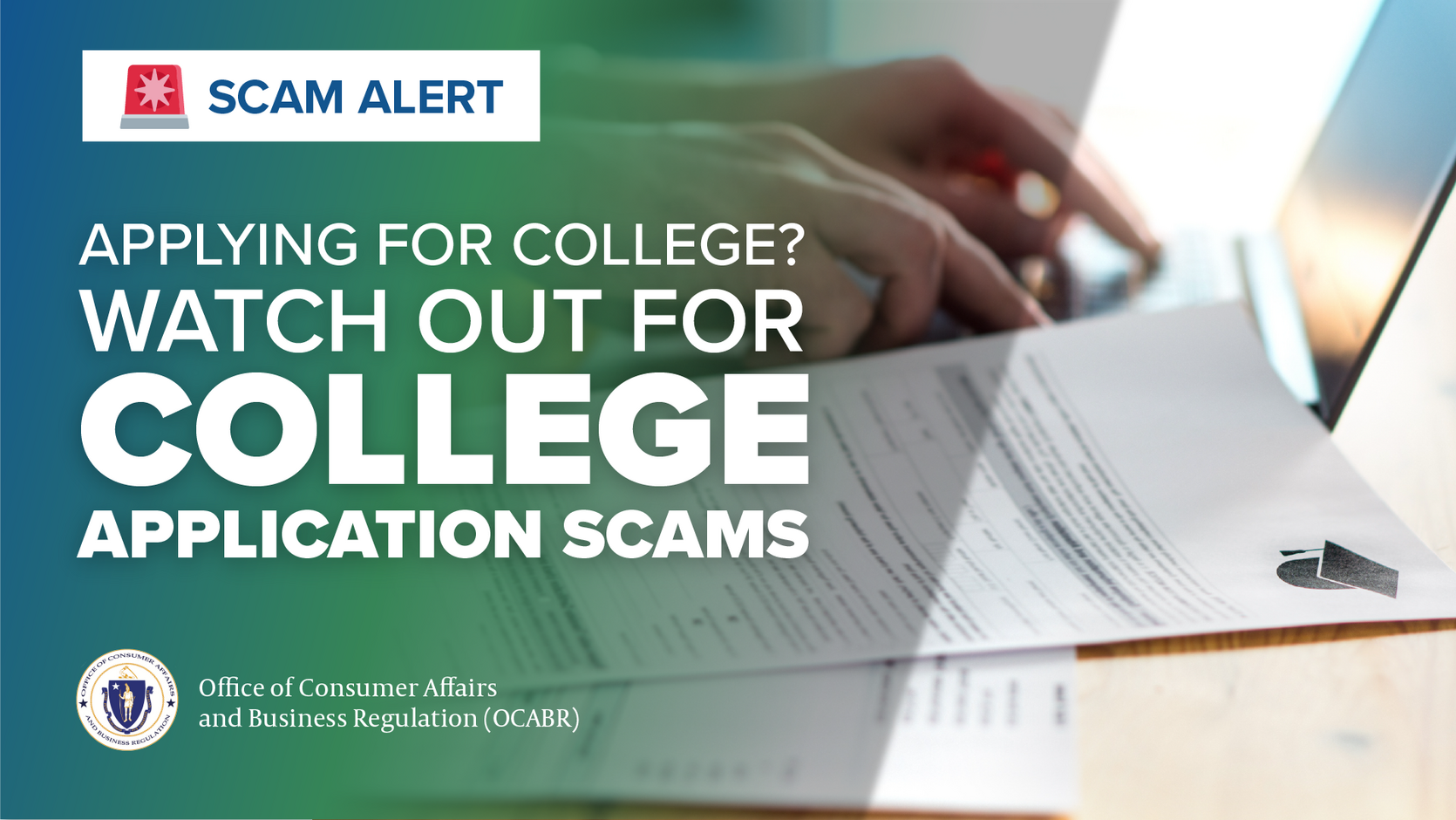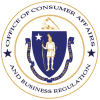- Office of Consumer Affairs and Business Regulation

Scammers target different groups of individuals at certain points of their lives, specifically at times when people are most vulnerable or confused. During the Fall, schemers often target students going through the cumbersome college application process. Fraudsters targeting school-aged consumers is on the rise, with the Federal Trade Commission (FTC) reporting that those under age 19 lost more than $50 million to scams in 2021.
While you and your family are picking the perfect school, keep in mind that not everyone you speak to, or every website you visit, will be legitimate. As the Office of Consumer Affairs and Business Regulation (OCABR)’s mission states, “an informed consumer is an empowered consumer, no matter what age.” In support of the Office’s mission, OCABR put together the following potential red flags to be on the lookout for as you apply to colleges:
- Offers of scholarships, grants, or other financial aid during odd times of the school year, or while a student is already enrolled at a college or university are often suspect. These opportunities usually require up-front payment to enroll or be considered for the program. Official financial assistance programs will not ask for fees in advance and operate on strict schedules.
- Individuals or companies claiming to expedite or file free applications for Federal Student Aid (FAFSA) paperwork are illegitimate. These schemers request fees to speed up or finish FAFSA filings. If the application is completed correctly, the scammer is completing a free service and now has access to your personal identifying information. Further, there is no way to expedite the FAFSA process.
- Scholarship or grant payments that require you to deposit a check that is larger than the awarded amount are scams. For example, the fraudster will inform the student they have been selected to receive financial assistance in the amount of $7,000, the student then receives a check in the mail for $10,000 and must send back the difference. In these cases, there is no scholarship, and the check is fake—once the bogus deposit is returned by the financial institution, you’re on the hook to pay your bank back the full check amount ($10,000).
Although navigating the college application and financial aid process can be overwhelming. There are some simple steps you can take to reduce the risk of fraud while pursuing your collegiate future.
- Ensure emails are delivered by a verified source. FAFSA communication will come from a “.gov” domain and the majority of schools will have email addresses ending in “.edu” and will not use any other unofficial email to contact you.
- Visit official websites before filling out any online forms or making phone calls. Phishing emails or text messages often contain fake links and contact information. Use the confirmed contact information and forms on the authorized college or program webpages.
- Secure your accounts with unique passwords. You may need to enter a lot of sensitive personal information such as your Social Security number or bank account information so much sure any accounts are extra secure.
If you or someone you know has fallen victim to a scam, or if a scammer contacts you, report it to the FTC at ReportFraud.ftc.gov.

